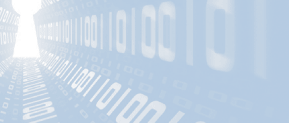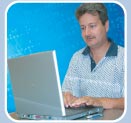 |
||||
  |
    |
|||
|
||||
|
|
||||
|
If my memory is correct, this came out of an old Gateway 2000 computer. Except this had one of the PC Edge connectors for the floppy disk instead of the pins and socket type connectors, so I also needed one of the cables: With a cable located, next was a computer that had a floppy disk interface. Few systems built in the last 10 or so years had circuitry for reading floppy disks. Fortunately (or unfortunately if you ask my wife) I had an older system still functional waiting to become an organ donor - an AMD Duron 750 MHz system circa 2001 that still had a floppy interface and could be configured for a variety of floppy disk types: With all that, first try gave me nothing but various flavors of I/O errors: The good news: The system could tell it was reading a FAT disk, but got errors when trying to read the main copy of the FAT table. This system was running an old copy of Windows XP Home. I tried a bunch of things all with no success - encouraged by the fact the disk was recognized, but the disk itself was a 360K disk and the disk drive was one of the "newer" 1.2 MB drives that could also read the 360K disks. What I didn't know is if I was having a hardware problem with the probably 25 year old floppy drive or data read errors off the 360K disk. I looked but I didn't have any 5.25" disks anymore having disposed of them about 6 months prior during a garage cleaning party. So I had no way to test my equipment to see if it worked or not. Ideally I would try writing to a different disk and reading it back to be sure I have working equipment, but with only the floppy with important data on it writing to it wasn't a good option. As an alternate path, I took the IBM PC apart and grabbed each of its floppy drives to see if those would read the disk or not: As a bit of encouragement, I tried to boot this data disk and got this message: Believe it or not, this is a very good message that brought with it some good news! This message is actually contained in the first sector of the first track on the disk - also known as the boot sector. It means the disk is reading and that the drive is capable of reading the disk ... if there is any data on the disk to read! Unfortunately, I kept getting other errors. With various tools, I still received errors reading and the disk appeared unreadable: My client still had a copy of MS DOS 2.0 and the supplemental programs disks, so I picked those up and continued the adventure. Believe it or not, his 30+ year old MS-DOS 2.0 disk booted just fine in my Duron 750 system and when I put the data disk in and did a directory, the system struggled but eventually came up with this: At last, a directory! But still missing sectors and disk read errors ... The pattern of the directory and where it paused made me think it wasn't able to read the main FAT table but after failing switched to the alternate FAT table. I also guessed that the more modern systems weren't set up to read that 2nd FAT table ... but I'm totally guessing here. So the question is now what could I get (and which files were most important?) The client selected a few strategic files and I copied whatever data was on them onto a 3.5" disk using my combination 5.25" / 3.5" drive. There were a number of sector reading errors, and I couldn't tell if it got any data or not. When that copied disk was moved to a modern system, it didn't display any files on it. Back in the main system it showed files on the disk ... So the data was there but no valid file system as far as a newer operating system could see. Some research talked about a media descriptor byte in the BIOS parameter block ... but changing this required writing to the disk and given its fragile state I was unwilling to write any data to the disk except as a last resort. You can read about that byte here. I tried a few other hoops - actually bringing a Windows 95 drive back to life as it supposidly could read disks without that media descriptor set properly ... and a few other dead ends before settling on a recovery strategy that would give me data. Using a tool that reads every sector and writes it into a virtual floppy disk format, after copying the strategic files of interest to the 3.5" disk the entire disk was copied to a VFD (virtual floppy disk) file ... and then any text strings from that file were extracted with a program called 'strings.exe' -- and that file was sent to the client ...Success!! Here is a snip from the strings in the file:
You can see the boot sector's 'Invalid System Disk' and 'Replace the disk, then press any key' strings. Then strings with the names of the files, and then the first strings from the file called 'MOVIES'. Lastly, here is the floppy with data and a copies of MS-DOS 2.0: I love it when a plan comes together! Data recovered, I put the PC back together again and had to snap a picture of it for fun which you can see here: If you found this helpful or not, please send me a brief email -- one line will more than do. Or more! I love hearing tidbits from users I've helped. Maybe share a line of what you searched for or how you found this article. I can be reached at: Copyright (C) 2017-2022 DAS Computer Consultants, LTD. All rights reserved.
|
||||

